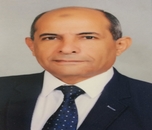Renowned Speakers

Eckrd Wimmer
Stony Brook University,USA USA

Stefan Vilcek
University of Veterinary Medicine and Pharmacy, Slovakia Slovakia

Gamal El Sawaf
Alexandria University, Egypt Egypt

Rob Striker
University of Wisconsin, USA USA

Nickolai Nossik
The D.I. Ivanovsky Institute of Virology, Russia Russia

Mugdha Vasireddi
Georgia State University, USA USA

Abdelouaheb Benani
Pasteur Institute of Morocco, Morocco Morocco

Dr. Dominic T Abaver
road walter sisului university, Mahatma Eastern South Africa
Recommended Global Microbiology Webinars & Conferences
Asia Pacific & Middle East
Canada
Virology-2026
To Collaborate Scientific Professionals around the World
Conference Date September 07-08, 2026
For Sponsors & Exhibitors
Speaker Opportunity
Useful Links
Past Conference Report
Supported By
All accepted abstracts will be published in respective Conference Series International Journals.
Abstracts will be provided with Digital Object Identifier by
